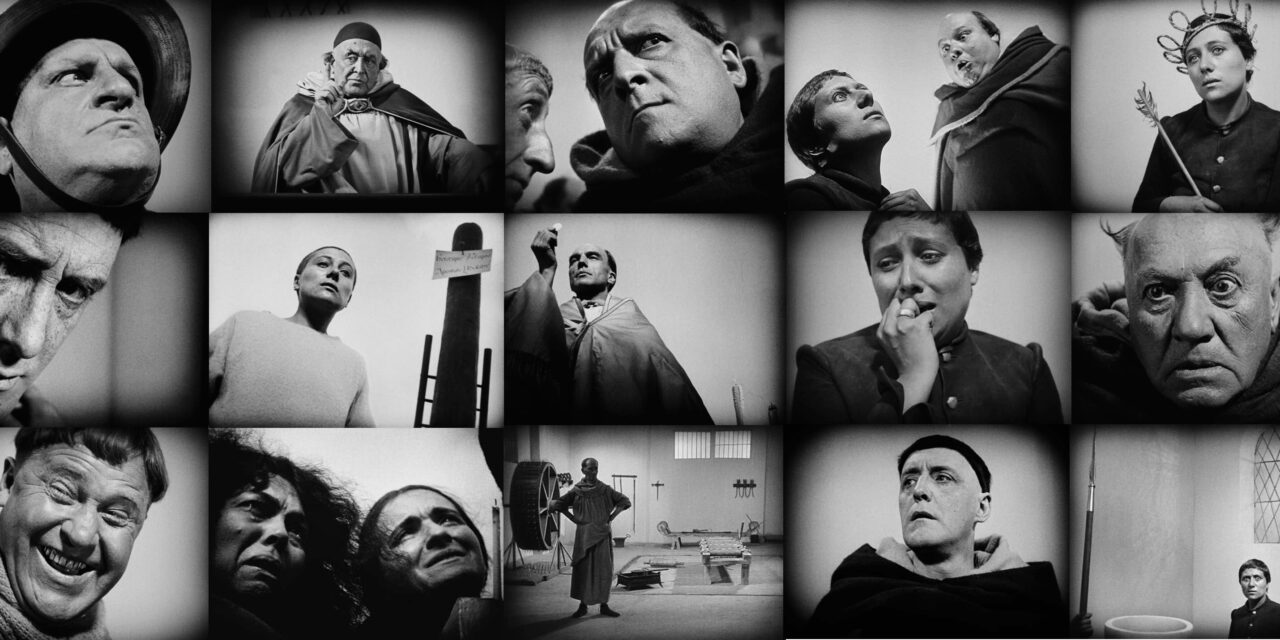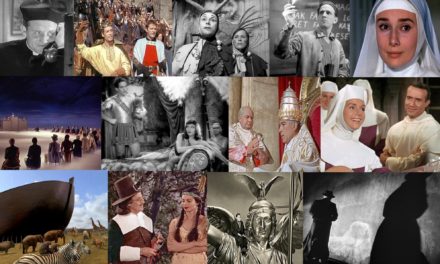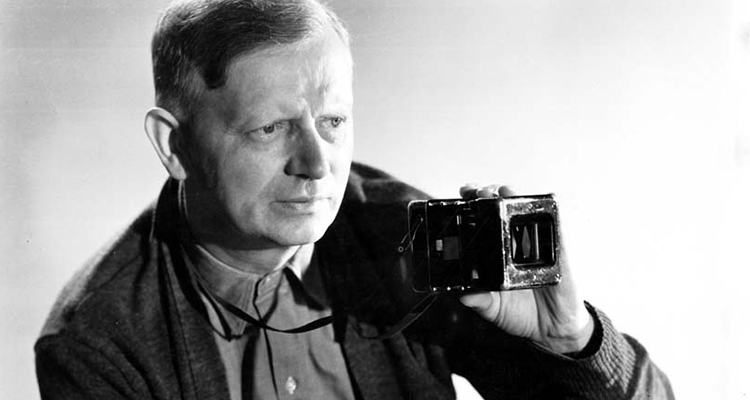
Carl Theodor Dreyer
The Passion of Joan of Arc by Carl Theodor Dreyer is widely acclaimed as one of the greatest films ever produced. It took a year and a half to shoot. Ironically, because the master print was accidentally destroyed, Dreyer remade the film from already rejected footage. Providentially, over 50 years after its creation, an uncut version was discovered in a closet after all others had been lost in a fire. It has since been digitally restored.
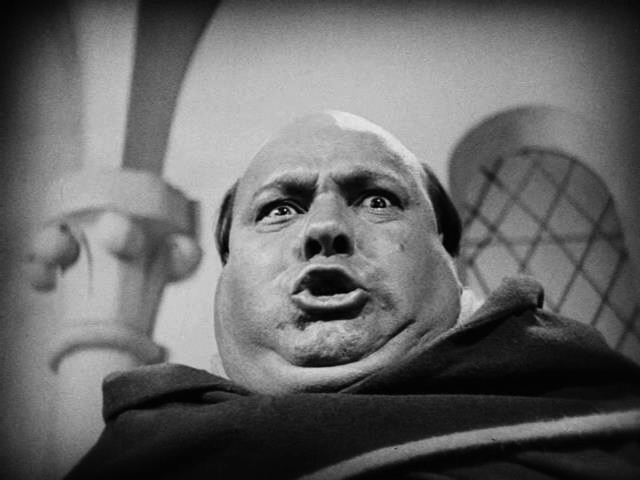 Not only is Joan under pressure from her judges, but even the buildings and furnishings are given offensive angles by the camera. The subject is rarely centered or straight. Instead of actors entering from one side of the screen or the other, they sometimes appear to come from below. At other times, the camera seems to be on the floor. Expensive sets, however, are often ignored for the sake of close-ups of faces without make-up imposing themselves on the viewers while revealing the depths of the saintly soul.
Not only is Joan under pressure from her judges, but even the buildings and furnishings are given offensive angles by the camera. The subject is rarely centered or straight. Instead of actors entering from one side of the screen or the other, they sometimes appear to come from below. At other times, the camera seems to be on the floor. Expensive sets, however, are often ignored for the sake of close-ups of faces without make-up imposing themselves on the viewers while revealing the depths of the saintly soul.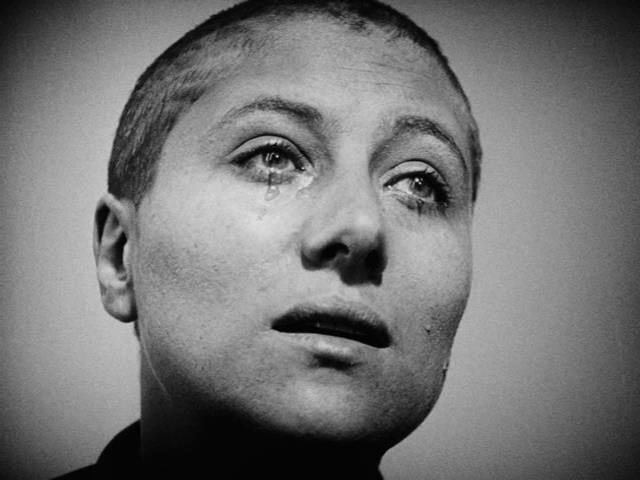 The realism derives from the actual minutes of the trial, but despite subtitles, the questions and answers needed to be expressed with silent drama. Each frame of the movie is a stunning photograph, a vignette with darkened corners. The high contrast of black and white with little gray both accents the wrinkles and warts of the bias judges and the contrast between good and evil.
The realism derives from the actual minutes of the trial, but despite subtitles, the questions and answers needed to be expressed with silent drama. Each frame of the movie is a stunning photograph, a vignette with darkened corners. The high contrast of black and white with little gray both accents the wrinkles and warts of the bias judges and the contrast between good and evil.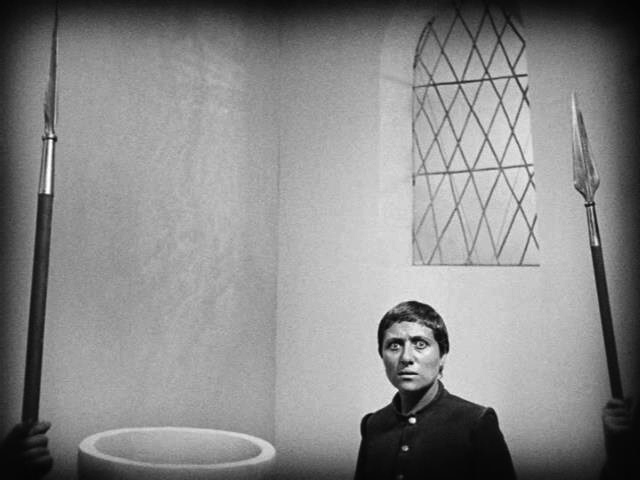 We first see Joan on the bottom of the screen between spears and below an empty wall and window, showing her apparent helplessness, yet her responses are disarming because truth is on her side. She does not know if God loves or hates the English. She only knows that the English will be driven out.
We first see Joan on the bottom of the screen between spears and below an empty wall and window, showing her apparent helplessness, yet her responses are disarming because truth is on her side. She does not know if God loves or hates the English. She only knows that the English will be driven out.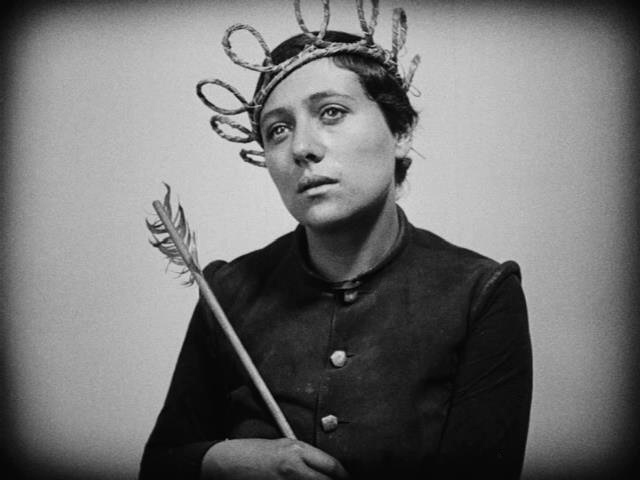 To the question of whether she is in a state of grace, Joan gives her famous reply: If I am, may God keep me there, but if not, then may He bestow His grace upon me. They deprive her of Mass and the Sacraments.
To the question of whether she is in a state of grace, Joan gives her famous reply: If I am, may God keep me there, but if not, then may He bestow His grace upon me. They deprive her of Mass and the Sacraments.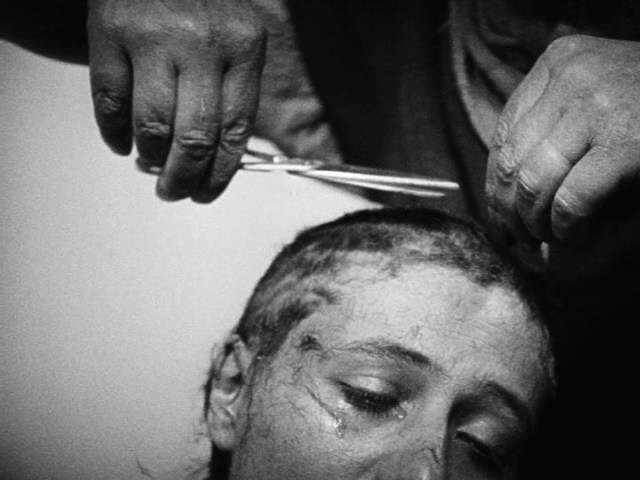 She is very weak, but they do not want her to die a natural death. In a graphic moment, feverish Joan is bled and her artery spurts into a pan. On the brink of execution, they persuade her to sign. Her hair is then roughly removed. The townsfolk celebrate with performing contortionists, which adds to the twisted feelings of the viewer. Suddenly, she realizes her mistake and is condemned to death as a relapsed heretic, apostate and idolater. Now, she realizes that the great victory will be her martyrdom, and her freedom is death.
She is very weak, but they do not want her to die a natural death. In a graphic moment, feverish Joan is bled and her artery spurts into a pan. On the brink of execution, they persuade her to sign. Her hair is then roughly removed. The townsfolk celebrate with performing contortionists, which adds to the twisted feelings of the viewer. Suddenly, she realizes her mistake and is condemned to death as a relapsed heretic, apostate and idolater. Now, she realizes that the great victory will be her martyrdom, and her freedom is death. During her execution, we see the rabble of crude faces of the spectators, who revolt for they recognize her as a saint. So, the soldiers scatter the mob with cruel violence. Although it may seem as if The Passion of Joan of Arc is unfavorable to the Church, the Church had already approved of her before her military campaigns and canonized her after her ordeal.
During her execution, we see the rabble of crude faces of the spectators, who revolt for they recognize her as a saint. So, the soldiers scatter the mob with cruel violence. Although it may seem as if The Passion of Joan of Arc is unfavorable to the Church, the Church had already approved of her before her military campaigns and canonized her after her ordeal.
